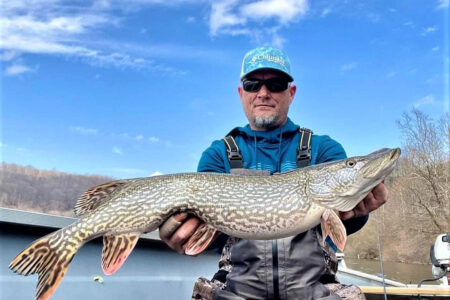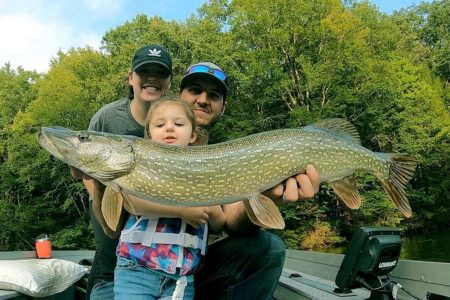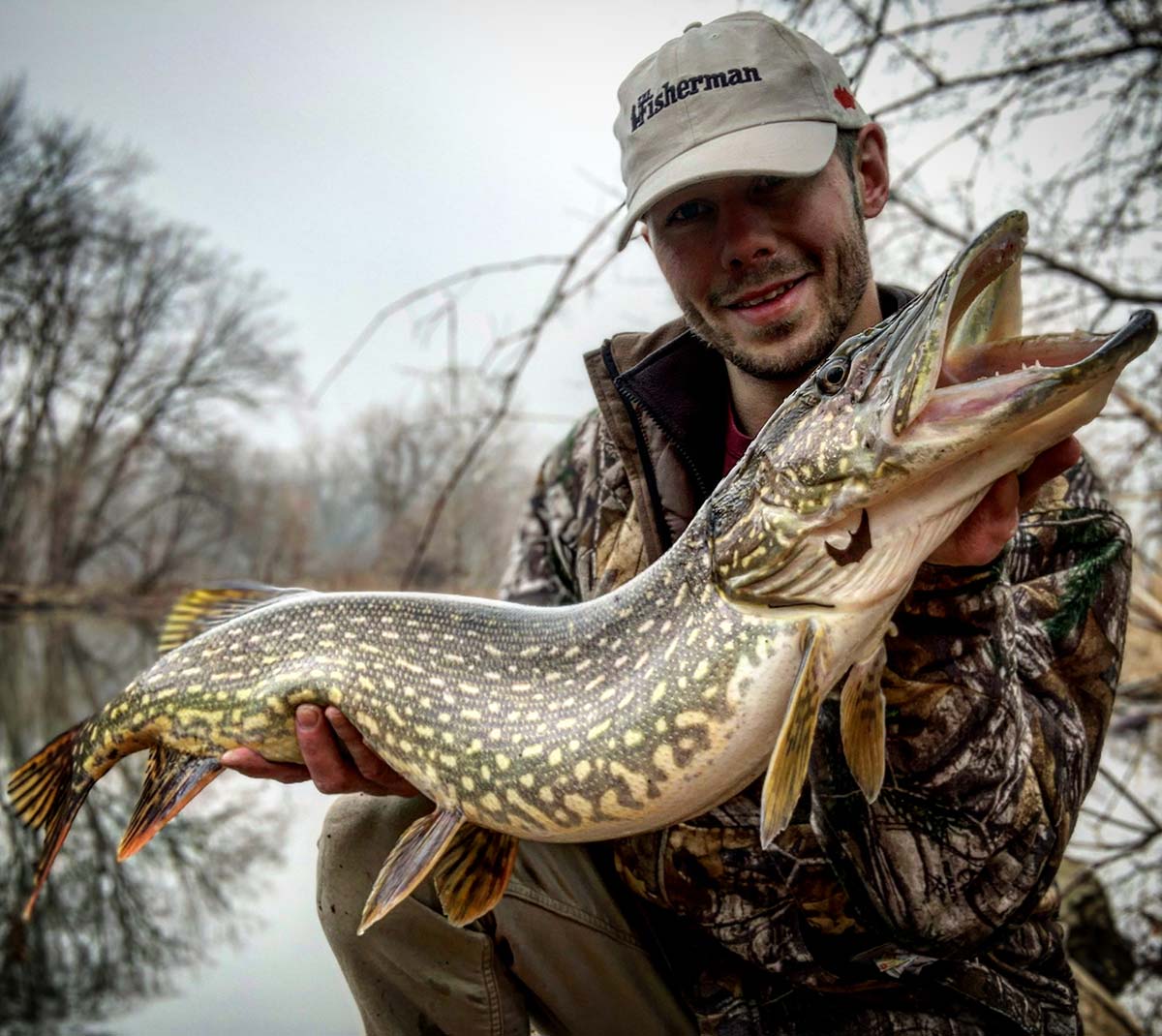
Fall is absolutely one of the best times of year for pike fishing as the cooling weather of October and November gets Mr. Toothy all revved up. However, as we slip into late fall you will need to adjust your approach in order to be successful.
As water temps steadily drop, vegetation begins to die off. Pike love to sit in the weeds for a few reasons. One, the rich oxygen that healthy green weeds give off, and two, to stalk their prey that hide in the weeds. Strong weed lines and weed beds attract forage for pike like baitfish and panfish such as perch, crappie and sunfish. However, as the weeds begin to die off it disperses those fish and they move on to the next favorable area: deep weeds. Weeds in deeper water tend to stay alive longer because the water temps will be just slightly warmer; find healthy weeds and you will find fish!
Pike will also slide into backwater coves and gorge themselves leading up to the winter months. Other than targeting the weeds for fall fish, you can look for downed trees and deeper pockets in backwater coves. I’ve found some very shallow coves that have channels or deep holes (deep being a relative term here) that pike hold in as ambush points. The rest of the area can be almost featureless, muddy flats with some scattered weeds and big fish can be found hiding in these pockets. I’ve seen guys burn spinner baits through a shallow cove and say “nope, nothing here.” Just slowing it down and working those contour dips in the lake/rivers bathymetry can really pay off.
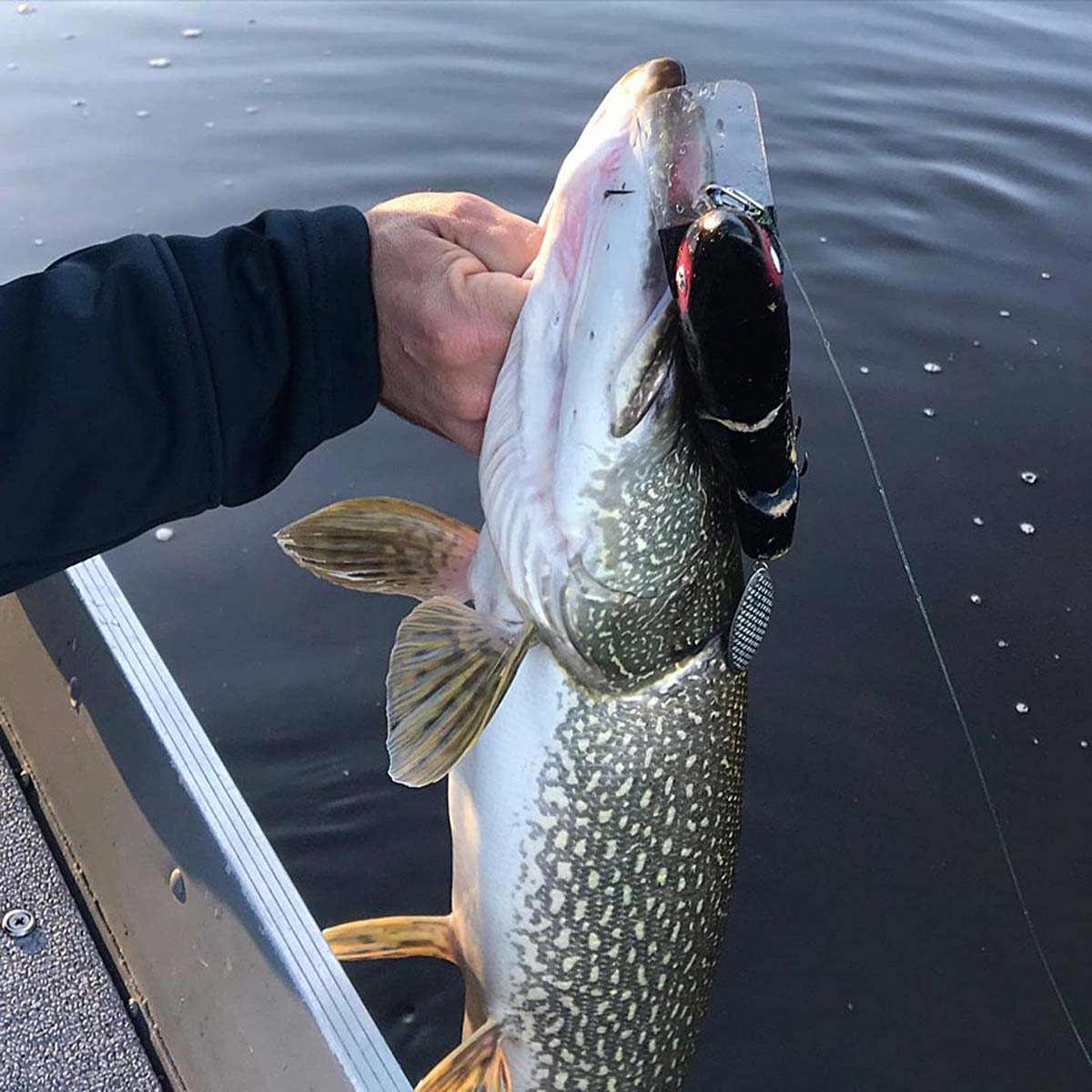
Those shallow coves can be pretty featureless as I mentioned before. The thing is, though, that a shallow cove warms up quite a bit during the day compared to the rest of the lake. It’s the same story as in the spring time. Direct sunlight warms the water in a shallow cove quickly. This stimulates zooplankton growth and in-turn draws baitfish in to feed. Predatory fish follow and feast on the bait fish, thus completing the food chain. I’ve spent a lot of time in various coves on big pike waters in Connecticut and Massachusetts. There are some extremely tough days in late fall where its freezing cold and I’ve fished for hours and caught nothing. At times I can see bait rolling through just breaking the surface in a cove that is all of six feet deep. Then floats start dropping and my lures get crushed. It can become pure mayhem for a few minutes and then it stops just as quickly as it started. It seems as though the pike were saving their energy and waiting for these moments. They demolish a bait ball and then return to their hideout again to wait patiently for the next buffet to arrive.
The later we get into fall, the colder it gets and the red hot action slows down greatly. November can be an emotional roller coaster because the weather is unpredictable at times. There are warm days with solid action and then its freezing rain and not much happening. Bare trees, seemingly lifeless waters and deafening silence can drive you mad, but persistence and patience will pay off. The coves you’ve been fishing are where the pike will pretty much post up through the winter. It can be a back and forth game while we flirt with first ice, but it at least takes pressure off of the fish. Take advantage of any open water by working bigger artificials slowly and with large live and dead baits. Pike scavenge just as much as they hunt, so a big dead sucker on the bottom is more than enticing.
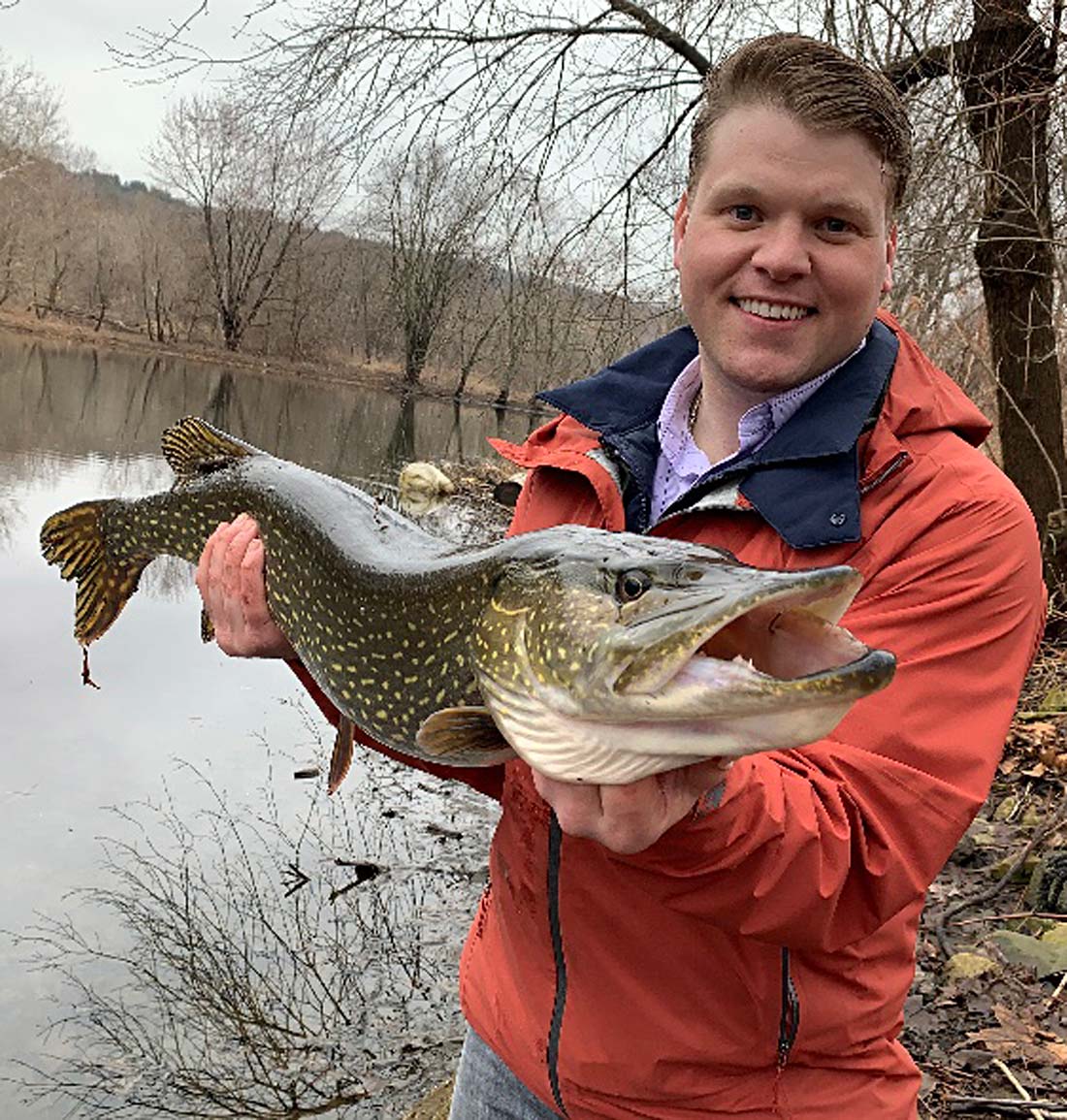
When choosing appropriate lures for this time of year it is important to keep in mind a few things. Fish have slowed way down. Yes, pike are a cold water species but their metabolism is affected just the same as other fish. I like to go two ways here. Make it look as natural as possible or use something BIG and wacky. With water clarity at its best in cold water, pike sometimes inspect your offering closely before deciding to consume it or not. I’ve also noticed that they tend to not expend more energy than they consume. So smaller offerings might not get the go-ahead nod. But something big and clunky will get smashed. Kind of like “go big or go home” and again, slowing it down is key to success here.
 Bait fishing is a surefire way to hook up with some big fish, and collecting your own bait can help to keep money in your pocket while remaining self-sufficient. This is especially true in the late fall and winter months when bait may be hard to find so you’ll be forced to pay for it. There are different kinds of bait depending on where you go, and in my home wasters of Connecticut, the rivers and streams are loaded with a variety of bait fish. Fallfish, black nose dace, long nose dace, white suckers and common shiners are some of the ones you might find as bycatch while trout fishing. In certain lakes, ponds and larger river systems you’ll find pond shiners, too. Pike prefer soft-rayed fish, so they will definitely gobble up any and all of the aforementioned bait fish.
Bait fishing is a surefire way to hook up with some big fish, and collecting your own bait can help to keep money in your pocket while remaining self-sufficient. This is especially true in the late fall and winter months when bait may be hard to find so you’ll be forced to pay for it. There are different kinds of bait depending on where you go, and in my home wasters of Connecticut, the rivers and streams are loaded with a variety of bait fish. Fallfish, black nose dace, long nose dace, white suckers and common shiners are some of the ones you might find as bycatch while trout fishing. In certain lakes, ponds and larger river systems you’ll find pond shiners, too. Pike prefer soft-rayed fish, so they will definitely gobble up any and all of the aforementioned bait fish.
Different methods can be used to obtain bait. Trapping is an easy way to load up without needing to be present. For small minnows, basic minnow traps made by companies like Frabill and Eagle Claw will suffice. However, for bigger baitfish you are better off using purpose-specific traps like the Magic Fishing Trap from OmniFish which has much larger openings that allow more desirable pike bait entry without return. Load up your traps with things like bread or dog food. I personally like to jig up my own bait and use my ultra-light trout setup with very small hooks tipped with just a bit of nightcrawler. With this set-up I can bang out a ton of bait in short trips. The one downside is that if you stick one and it hops off of your hook, it can spook the whole school. Injured baitfish release a pheromone into the water that warns others so they will quickly scatter.
Once you acquire some baits you’ll need to keep them alive, and a large fish tank or 50-gallon drum in the garage with proper filtration and aeration is the way to go. For the most part it should be just above freezing so your bait is happy. With water temps that cold, their metabolism slows down and they will stay alive for a long time without needing to be fed much or water changes. Keeping them cold will also prevent shock when you drop them down the hole. Load up all fall long and enjoy your bounty of a seemingly unlimited bait supply during the ice season.
I have three go-to presentations in cold water for pike. Spoons are an absolute favorite of mine. Slinging big spoons and slow rolling them can cover a lot of water while wobbling on through like an injured baitfish. I also like to throw weightless super flukes that I can twitch and pause. This is extremely productive in some places where I can see the fish. I have a pair of Costa Broadbills and they have been crucial when sight fishing for pike. What resembles a log off to the side is actually a pike lying motionless that I would have missed otherwise. Toying with them by tossing a super fluke in their face can be a fun game of cat and mouse, especially with those fish that are reluctant to give chase. Lastly, I love big jointed swimbaits. I usually reach into my striper bag for a jointed Bomber or X-rap. However, recently I’ve gotten into these handcrafted customs from River Snacks. These baits have proven to get the attention of some big mamas.
Another approach that I’m a huge fan of especially on those brutally-cold days is fishing with bait. I spend a bit of my time during October and November collecting large baitfish to use late fall and all winter long. Suckers, pond shiners, fallfish and dace are mostly what I collect by either trapping or by jigging them up. Tossing one of these large baits out solo or under a float can help to increase your odds, and I do this while I work an artificial. The pike can sense a struggling baitfish and also my lure. They will wander slowly but quite a ways to investigate things. There’s been many days in late November and even early December that the float keeps dropping and they want nothing else. I rig them up with 2/0 Gamakatsu circle or octopus circle hooks and a 50-pound monofilament leader. I’ve tried to go lighter for more transparency but I’ve lost fish because of their razor-sharp teeth. So that’s the lowest I’ll go to avoid that same heartbreak again. When the bite gets tough, remember that nothing out-fishes live bait.
The last bit of information that I’d like to put out there to aid your success in late fall pike fishing is to follow the moon. Pike follow certain moon phases very closely, specifically the new and full moon. I’ve caught some of my biggest pike during a full moon, and usually at dusk. The end of the day is when the water is warmest and fish are most active. Usually right at the last hour of daylight is when big fish make mistakes. Pike are sight predators, and with daylight fading quickly, the dinner bell rings so they answer or go hungry. Factor all of this information in and you just may land a new personal best as you continue your cold November reign.
